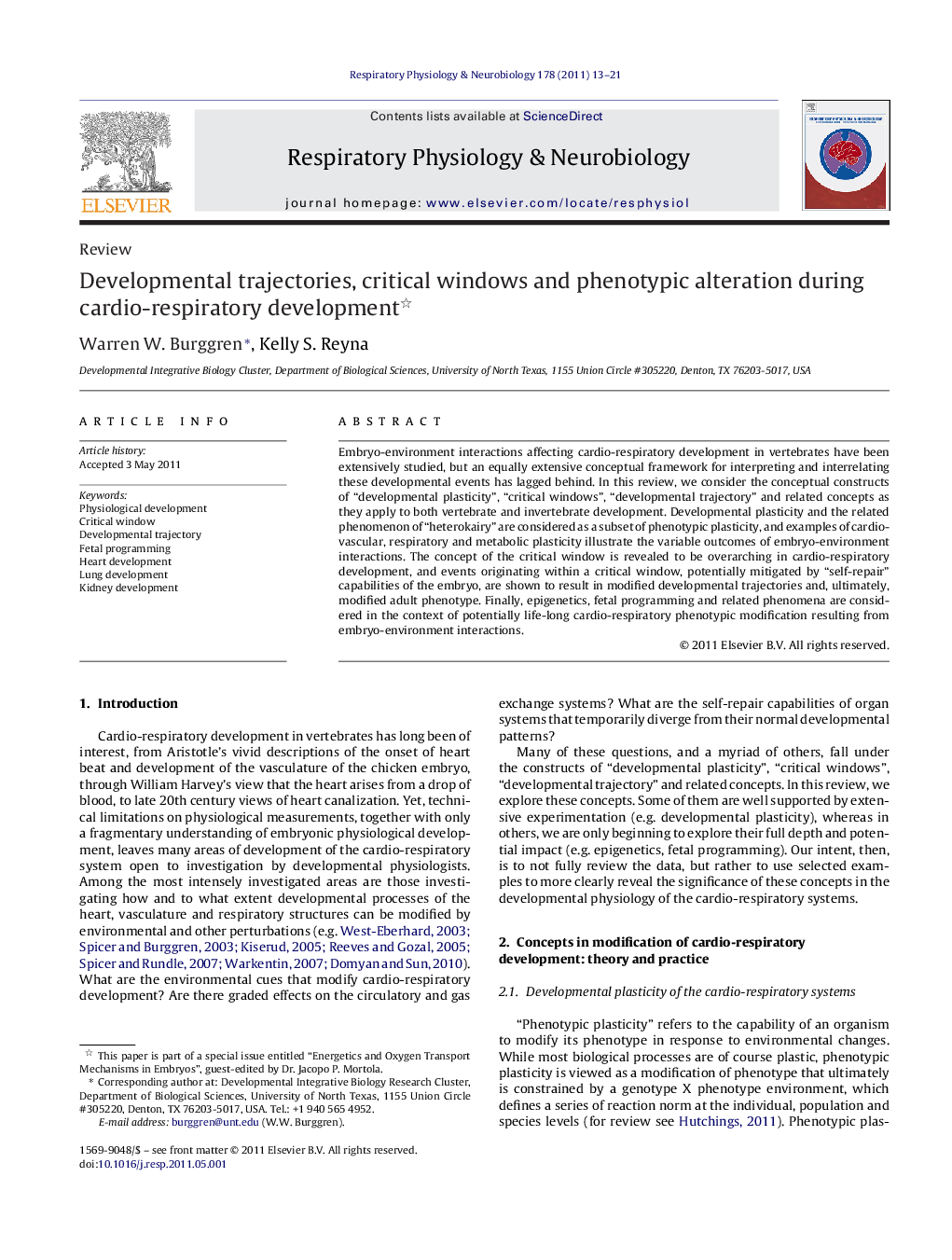| Article ID | Journal | Published Year | Pages | File Type |
|---|---|---|---|---|
| 2847495 | Respiratory Physiology & Neurobiology | 2011 | 9 Pages |
Embryo-environment interactions affecting cardio-respiratory development in vertebrates have been extensively studied, but an equally extensive conceptual framework for interpreting and interrelating these developmental events has lagged behind. In this review, we consider the conceptual constructs of “developmental plasticity”, “critical windows”, “developmental trajectory” and related concepts as they apply to both vertebrate and invertebrate development. Developmental plasticity and the related phenomenon of “heterokairy” are considered as a subset of phenotypic plasticity, and examples of cardiovascular, respiratory and metabolic plasticity illustrate the variable outcomes of embryo-environment interactions. The concept of the critical window is revealed to be overarching in cardio-respiratory development, and events originating within a critical window, potentially mitigated by “self-repair” capabilities of the embryo, are shown to result in modified developmental trajectories and, ultimately, modified adult phenotype. Finally, epigenetics, fetal programming and related phenomena are considered in the context of potentially life-long cardio-respiratory phenotypic modification resulting from embryo-environment interactions.
